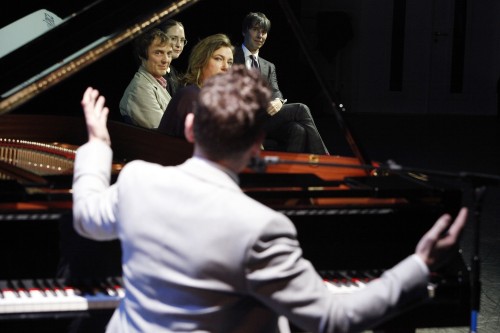Tag archives: music
An animated history of physics, messing around with methane and Vangelis on space
By Hamish Johnston
Topping this week’s Red Folder is an “Animated history of physics” narrated by the Irish comedian and science enthusiast Dara O Briain. Running from Galileo to Einstein’s general theory of relatively – and giving very short shrift to quantum mechanics – it’s more of a selected history. You can enjoy the animations and O Briain’s soothing brogue in the video above.
O Briain often teams up with the particle physicist and media celebrity Brian Cox, who is also in the news recently for teaching children in London how to ignite potentially explosive gas. Before you call social services, it was all in the name of science education and part of Cox’s visit to St. Paul’s Way Trust School. Cox had been invited to the school’s summer science school and obliged by leading an experiment into the properties of methane. “There is no shortage of enthusiasm for students and young people when you talk about science and engineering,” Cox told the Reuters news agency.
Carried away by a well lit shadow
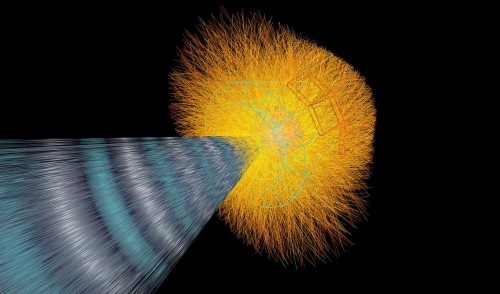
Simulation of a lead-ion collision in the ALICE detector. (Courtesy: CERN)
By James Dacey
As concept albums go, the latest release by Jake Hertzog can certainly be stacked at the intellectual end of your record collection. This week, the US jazz-rock guitarist released his sixth studio album, entitled Well Lit Shadow – a suite of solo electric-guitar tracks inspired by images from the Large Hadron Collider (LHC) and other experiments at the CERN particle-physics lab. You can find details of how to purchase or stream the album on Hertzog’s website.
Now, I’m not the world’s biggest jazz aficionado but I gave the album a listen and it’s far more accessible than the concept might suggest. Hertzog’s musicianship shines through and bright walking riffs on tracks such as “Star Drops” and “Traces of You” evoke images of devoted researchers working through vast amounts of data in pursuit of knowledge. According to Hertzog’s website, some of the pieces are very literal attempts to depict the chaos and beauty of subatomic-particle collisions, while other tracks are more abstract meditations on the deeper meaning of these experiments. The album’s title track is described as “a musical poem dedicated to the philosophical implications of this science”.
View all posts by this author | View this author's profile
Lilting to the LIGO tune, Fukushima five years on and more
By Tushna Commissariat
Looks as if LIGO’s gravitational-wave discovery is still rocking all over the world, as you can now groove to the dulcet tones of singer and physicist Tim Blais, who runs the acapellascience channel on YouTube. With some help from the Perimeter Institute in Canada, the singer has created his latest “nerd-pop” parody, titled “LIGO Feel That Space” (sung to the tune of The Weeknd’s “Can’t Feel My Face”). After you listen to the catchy tune above, take a look at this interview with Blais on the Perimeter website to find out just how he creates his songs and how he went from physicist to a viral YouTuber.
Can a concert hall have a perfect acoustic?

Sound engineer Paul Waton and soprano Lesley Garrett discussing theatre acoustics at the Royal Opera House. (Courtesy: Brian Slater)
By James Dacey
Concert hall acoustics was the theme of a fascinating panel debate last night at the Royal Opera House (ROH) in London. Among the speakers was British soprano and presenter Lesley Garrett who shared her views on the acoustics of some of the great concert halls in which she has performed. She was joined by acoustics engineer Trevor Cox, acoustics consultant Helen Butcher and sound engineer Paul Waton, who has recorded a range of classical concerts for the BBC. Insight: the Art and Science of Acoustics was co-hosted by the Institute of Physics, which publishes Physics World.
Cox – who featured in our 2014 podcast about sonic wonders – set the scene by describing some of the fundamental acoustic considerations in designing a concert hall. We heard clips of Cox playing a saxophone in an “anechoic” chamber, followed by the same sax lick performed in an oil tanker – the place with officially the longest echo in the world. Cox’s point was to show the difference between high clarity at the one extreme and intense reverberation at the other. The sound wasn’t quite “right” in both cases. “Concert hall design is about finding a pleasing balance between these two extremes,” he said.
View all posts by this author | View this author's profile
Heavy-metal Higgs, meet the Publons, Stephen Hawking’s galactic tour and more
By Tushna Commissariat and Hamish Johnston
I’m sure that most of you have wondered what the Higgs boson would sound like if it were a heavy-metal song. Now you can turn it up to 11 (TeV that is) courtesy of CERN physicist and guitarist Piotr Traczyk, who has “sonified” data from two plots from the CMS experiment that were presented at the Higgs discovery seminar on 4 July 2012. His heavy-metal ditty is based on gamma–gamma and 4-lepton data from CMS and after you listen to his excellent song in the above video, you can find out more about how it was created by reading this entry by Traczyk on the Cylindrical Onion blog.
View all posts by this author | View this author's profile
Florida’s declining Space Coast, naming mountains on Pluto and silly rock bands
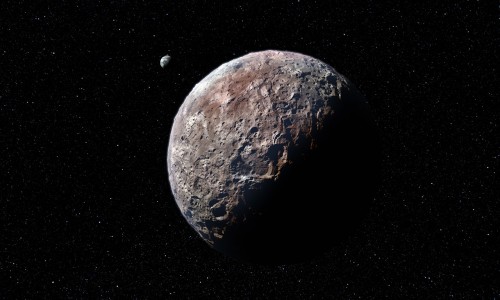
Name game: does that crater look like a Steve, or maybe a Carol? (Courtesy: IAU/L Calçada)
By Hamish Johnston
When I was a young lad back in the late 1960s, my family would join the annual March migration of Canadians to Florida. Along with alligator farms and the endless beaches, the Kennedy Space Center was a popular tourist destination and I can still remember visiting it and getting a solar spinner globe as a souvenir. Sadly, since the end of the Space Shuttle programme in 2011, Florida’s “Space Coast” has fallen on hard times. While there are still rocket launches – there are two planned for April – thousands of NASA employees have been let go and the surrounding communities look worse for wear. The New York-based photographer Rob Stephenson has put together a collection of images taken in and around the centre that he calls “Myths of the Near Future”. To me the photographs evoke the allure of the space age as well as the inevitable decline of any human endeavour.
View all posts by this author | View this author's profile
Particle-physics electronica
By Michael Banks
Fancy a bit of particle-physics electronica?
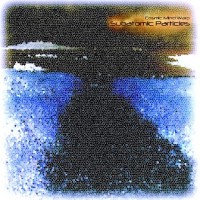 Then make sure you download the latest album from Isle of Wight electronic duo Cosmic Mind Warp.
Then make sure you download the latest album from Isle of Wight electronic duo Cosmic Mind Warp.
In a “unique crossover” between the worlds of cosmology, quantum physics and electronic music, Alister Staniland and David Holmberg have just released a new concept album dubbed Subatomic Particles.
The 15-track album, which features songs such as “Large Hadron Collider”, “Quantum Tunnelling” and “Down Quark”, is described by the duo as a “hallucinogenic head-trip through the microscopic world of subatomic particles and the strangeness of quantum physics”.
View all posts by this author | View this author's profile
Slamming physics at Fermilab, dancing to Yuri Gagarin and lifting off from ‘Cape Kebaberal’
By Hamish Johnston
Giving a fired-up talk at a physics conference is a good way for aspiring researchers to make themselves known to the community, but unless you have a natural gift, lots of practice is required. That’s why many universities and labs host “slams” to encourage staff and students to talk about their research to a broader audience. Above is a video of the sold-out Fermilab Physics Slam 2014, which was held last week at the lab on the outskirts of Chicago.
View all posts by this author | View this author's profile
What makes the perfect song?
By James Dacey
There was a telling moment early on at the event I attended last night when science writer Philip Ball was asked to name his “perfect song”. With a slightly bemused look, Ball picked a tune that I’m pretty sure few in the audience had heard of – “The Most Wanted Song”, which was co-written by a neuroscientist to incorporate the musical elements that people find most pleasing to the ear. Give the tune a listen and you’ll realise that it is a horrible saccharine track that you’ll quickly want to turn off. Of course, the point of the song – and Ball’s choice – was to ridicule the idea that you can create beautiful music with a formula.
Ball was part of a panel discussion at the Royal Opera House in London on “What makes the perfect song?”. He was joined by physicist-turned-opera singer Christine Rice and musicologist Maria Witek, and the event was chaired by the physicist, broadcaster and former pop star Brian Cox (by angela). While the panellists were unanimous in their belief that music is a complex emotional thing that cannot be fully explained by physics, they did have some fascinating insights into the science of song.
View all posts by this author | View this author's profile
A theremin fit for a gerbil, hairdos for physicists and the trouble with Richard Feynman
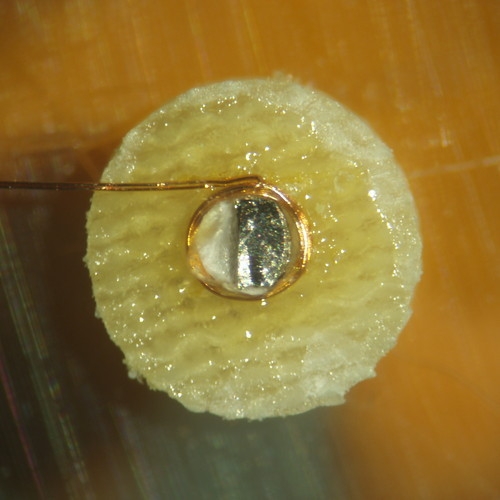
Calling all musical gerbils: a new take on the theremin. (Courtesy: Paul Goddard)
By Hamish Johnston
“How we created spooky experimental music in a superconductor lab”: what physicist could resist clicking on this story, which appeared on the Guardian website earlier this week? Written by the physicist-turned-computational-biologist Andrew Steele, the article describes how Steele and a few pals converted a magnetic sensor into a musical instrument. Like the theremin, which is played by waving your hands around an antenna, this new instrument responds to the player’s motion. But because the sensor was optimized for studying superconductors rather than creating freaky mood music, Steele explains the “instrument covered three octaves in less than a centimetre of hand movement”. He suggests that playing the instrument should probably be left to a talented gerbil rather than talented superconductor researchers. You can listen to Steele’s attempt at making music on SoundCloud.
